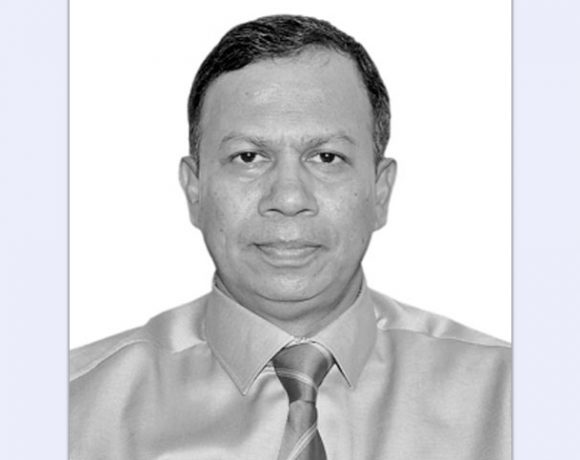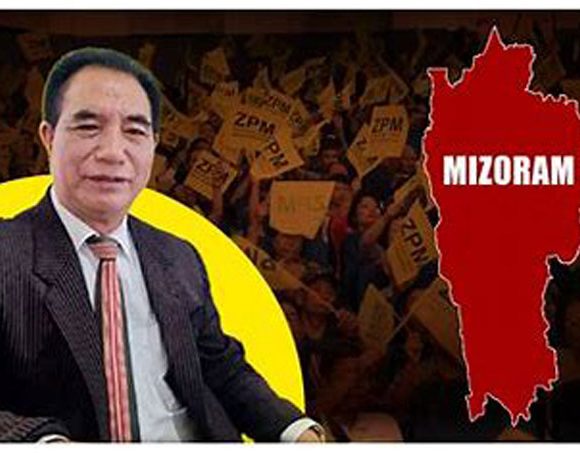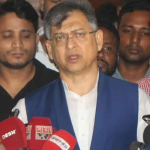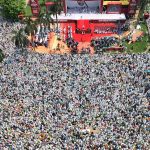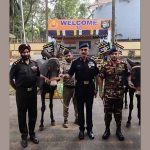CHT Peace Accord at 25: Problems and Ways Forward

Maj Gen MOHAMMAD ASHAB UDDIN, NDC, PSC (Retd)
The Chittagong Hill Tracts is a naturally beautiful and culturally varied region in Bangladesh’s southeast. It has a total area of 5,093 square miles, one-tenth the size of Bangladesh. The region boasts various hills, protected woods, and the magnificent Kaptai Lake. Thirteen tribes and Bengalis live in the region. Bengalis account for about half of the region’s entire population. Chakma, Marma, Bam, Tripura, Tanchangya, Mro, Lusai, Pankhwaa, Khumi, Riang, Gurkha, Khiang, and Chak are the tribes that live in the Chittagong Hill Tracts. According to the 2022 census, the total population of Chittagong Hill Tracts is 18,42,815, with tribals accounting for 49.94% and Bengalis for 50.06%. The average literacy rate is 68.90%. With a 73% literacy rate, the Chakma tribe outperforms other tribal groups. As a result, the Chakma tribe has far more political and economic power than any other tribe in the region.
On February 15, 1972, MN Larma and some tribal leaders demanded the formation of the Parbatta Chattagram Jana Samhati Samiti (PCJSS) and the establishment of an independent state called Jummland. But taking into account the state integrity and national integration of the newly independent Bangladesh, the then government did not accept all those demands for good reasons. At one point, the PCJSS started armed and overt political activities by forming its military wing, “Shaanti Bahini,” on January 7, 1973. On November 10, 1983, PCJSS President MN Larma was killed in a fierce clash between the Preeti group and the Larma group at the Shanti Bahini camp at a place called Kalyanpur in the Amarpur area of Tripura state, India. Later, Santu Larma took over as president of PCJSS. The armed conflict started between the Shanti Bahini and the security forces in mid-1976. In addition, the Chittagong Hill Tracts became unstable due to the killings, abductions, disappearances, ethnic riots, and brutal attacks on resettled Bengalis by the “Shanti Bahini”. Negotiations with Shanti Bahini continued while they carried out insurgency operations to overcome the crisis. Finally, on December 2, 1997, an accord was signed between the National Committee for the Chittagong Hill Tracts and the PCJSS. That Accord is also known as the Chittagong Hill Tracts Peace Accord.
On February 10, 1998, JSS leader Santu Larma formally surrendered his firearms to then-Prime Minister Sheikh Hasina in a ceremony held at the Khagrachari District Stadium. Members of the Shanti Bahini laid down a total of 874 firearms during the four rounds, and 1,946 members of the Shanti Bahini surrendered to the government, out of whom 715 were given jobs in the police force. The CHT Peace Accord resulted from political foresight and collaborative efforts by the then government and the Jana Sanhati Samiti. As a result of this Accord, the possibility of political and socio-economic development came up in addition to peace in the region. Following the Accord, a regional council with 25 members has been set up. JSS President Santu Larma is the head of this council, which gives him the rank of state minister. The Ministry of Chittagong Hill Tracts Affairs has also been formed, and Mr. Bir Bahadur Ushaisingh, MP, is serving as the full minister of that ministry. According to the agreement, out of 33 offices, 30 have already been handed over to district councils. Of the 72 sections of the Accord, 48 have been fully implemented, and 15 have been partially implemented. Also, the implementation of nine sections is in process. A total of 12,223 India-returnee tribal refugee families with 64,612 members have been resettled through the Refugee Task Force. Since the peace accord, there are now 812 elementary schools, 404 high schools, 25 colleges, 11 polytechnic institutes, one nursing school, one science and technology university, and one medical college. Extensive communication system development, including the construction of the Thanchi and Ruma bridges in Bandarban and the Bangladesh-India Friendship Bridge in Ramgarh of Khagrachari and the border road, has been achieved. A total of 3,440 km of roads, 32 hospitals, and 27 industries/factories have been erected since the Accord. A brigade of security forces and 241 camps have so far been withdrawn from the Chittagong Hill Tracts as part of implementing the terms of the agreement. A total of 69 eye-catching tourist centres have been established in different areas of the Chittagong Hill Tracts.
CHITTAGONG HILL TRACTS PROBLEMS
Existing Land Problems In Chittagong Hill Tracts
To solve the land problem in the Chittagong Hill Tracts, a 9-member Land Dispute Settlement Commission was formed in 2001 with a retired judge as its chairman, and the Chittagong Hill Tracts Land Dispute Settlement Commission Act-2001 was enacted. But this Land Commission could not settle even a single land issue due to the opposition of tribal leaders. Finally, the ‘Chittagong Hill Tracts Land Dispute Settlement Commission (Amendment) Ordinance-2016’ was passed on August 8, 2016, with many concessions in favour of the tribal people. While the hill communities have a very positive attitude towards the Land Disputes Settlement Commission (Amendment) Ordinance – 2016, the Bengali community is quite apprehensive about getting justice from the Commission. The Bengalis of Chittagong Hill Tracts feel that since the amendment provides a legal basis for establishing the claim of ‘traditional land rights and as seven of the nine members of the Land Commission are tribals, and the rest are government representatives, all the decisions of the Commission may go against the Bengali community as Bengalis are not represented equally. The number of applications filed by Bengalis also reflects their apprehension about this. While tribals submitted 22,970 applications to the Commission, Bengalis submitted only 500, which is an expression of distrust on the part of the Bengalis.
Emergence of Multiple Regional Groups And their Terrorism
Armed members of the Shanti Bahini were supposed to lay down their arms and return to everyday life after the signing of the Accord, but some of their members continued their armed activities without laying down their arms. Also, when the JSS (reformist) split off from the PCJSS and the UPDF (Democratic) from the United People’s Democratic Front (UPDF), it made a total of 4 regional parties. JSS (core) and UPDF (core), in particular, play a significant role in determining the political nature of the Chittagong Hill Tracts. They are jointly putting pressure on the rival JSS (reformist) and UPDF (democratic) to dissolve or compromise. Furthermore, in Rangamati and Bandarban, two more armed terrorist groups emerged: the Marma Nationalist Party (MNP) and the Kuki-Chin National Front (KNF). It is known from various media that currently, the groups are carrying out various terrorist activities, including extortion, murder, and kidnapping, to spread influence in the region.
Dream Of An Independent Jummland
A vested tribal interest group dreams of creating an independent Jummland by separating Chittagong from the map of Bangladesh. They are carrying out various plots at home and abroad to realize the dream of forming an independent Jummaland. They are campaigning for an independent Jummaland and encouraging tribal youth to do so through various social media platforms, particularly Facebook. Already they have published the flag, currency, map, identity card, radio channel, national anthem, etc., of an independent Jummland. Instead of observing National Mourning Day on August 15, they have been observing November 10 (MN Larma’s death day) as National Mourning Day.
Communal Provocation
Regional parties and tribal vested interest groups are engaged in activities destabilising the Chittagong Hill Tracts through communal incitement. Tensions and fights between local tribes and Bengalis centred on local tribes building houses in occupied hillocks in Mahalchari, Jaisenpara. In the Jaisenpara area of Mahalchari, some local tribes built houses with bamboo poles and chopsticks on Bengali land in the dead of night, set fire to those houses, blamed Bengalis, and even attempted illegal land grabs in the Chandukchari area. Some 2–15 armed tribal terrorists beat up Bengali workers and 20–25 Bengali labourers while working in Kachukshe in Life Ukarbaripara. And to intimidate them, they fired 5–20 blank shots in the air.
Propaganda By Vested Interest Groups
Regional groups and tribal vested interest groups are engaged in various forms of propaganda against security forces and the state through social media. In continuation of this, the army was framed in the alleged abduction of Hill Women’s Federation leader Kalpana Chakma and the alleged rape of a Marma girl in Bilaichari, and the armed terrorists of the UPDF (main) party in the Lakshichhari zone took pictures of Bengali construction workers by forcing them to hold weapons and used them in the propaganda. Also, some well-known people and intellectuals have spoken out on the tribals’ behalf on sensitive issues related to the Chittagong Hill Tracts. This, along with the Land Dispute Settlement Commission, has made the situation in Chittagong Hill Tracts more complicated in some cases.
Barriers To Socio-Economic Development
Terrorists of regional groups are creating obstacles in communication/economic development through extortions, beatings, threats, etc., in various socio-economic development activities, including the construction of roads, bridges, and culverts. Among them notable are the following: the stopping of the construction of walls on the side of Baraichhari-Rangamati road by terrorists of JSS (core) group; vandalism of 3 trucks in Pankhimura area of Sindukchari zone; demanding of Tk 2,000 as extortion from each school of Rowangchari Upazila of Bandarban on the mobile phone by terrorists of JSS (core) group; setting of fire to hydraulic rig machines in Tripurachharipara of Waggachhara and in Tripuracharipara and Deppachharipara of Rangamati by JSS (core) terrorists; extortion by UPDF (core) party terrorists from drivers and their associates of RFL company trucks in Pankhimura area of Sindukchari zone; extortion from Bajaj company’s motorcycle-carrying vehicle and robbery of 2 Bajaj Platina model motorcycles by UPDF (core) terrorists in 18 Milepara of Naniarchar zone; extortion from Nestle company vehicle and robbery of noodles by UPDF (core) terrorists in 18 Milepara of Naniarchar zone; and demanding of Tk 5 lakh extortion from Chittagong Hill Tracts Development Board’s Chief Executive Engineer Tushit Chakma on the mobile phone by JSS (core) terrorists.
Obstacles to Construction Of Border Road
In mid-2019, work on the border road construction project began in three hill districts. Since the beginning of the project, terrorists of the regional group have been trying to create obstacles in the construction of the border road on the excuse of various issues, including extortion demand. Besides, in 2016, the government conducted a survey to construct the Chittagong link road from Thegamukh with the financing of the World Bank. But after Santu Larma, chairman of the regional council, and the main JSS (core) party, objected to the World Bank regarding the construction of the said road, the World Bank withdrew itself from the project. According to various sources, Santu Larma raised objections due to the movement and hideouts of the JSS (Core) armed groups in the said area.
Obstacles To Tourism Industry Development
Terrorists and the tribal vested interests of regional parties continue to obstruct the development of the tourism industry in the Chittagong Hill Tracts to implement their agenda. It should be noted that on February 7, 2021, a long march in Bandarban took place in protest of the construction of a five-star hotel in Chandrapahar; on September 18, 2021, JSS (core) terrorists fired on a tourist vehicle on the Bandarban-Rangamati road; and on January 24, 2022, four Bengali tourists and a microbus were kidnapped in the Khagrachhari area.
Conversion Activities
Through several non-governmental organizations (NGOs), vested interest groups in the Chittagong Hill Tracts have kept up their conversion of ordinary and poor tribals by offering them various inducements. A total of 4,591 people have converted to Christianity, 2 to Buddhism, 76 to Hinduism, and 248 to Karamah since the Accord.
WAYS FORWARD
Making the Land Commission work
Land problem is one of the main problems in Chittagong Hill Tracts. The Land Commission should take effective measures impartially to solve this problem. Furthermore, land ownership can be quickly determined by initiating a land survey in the Chittagong Hill Tracts, which will play an important role in solving the land dispute.
Preventing Regional Groups From Engaging In Terrorism
Peaceful coexistence of all communities can be maintained by curbing the killing, extortion, kidnapping, and other terrorist activities of the six armed terrorist groups that have sprung up in Chittagong Hill Tracts at various times.
Tourism/Communication/Economic Development
The development of the tourism sector in the Chittagong Hill Tracts is greatly hampered by tribal vested interest groups. Suppose the tourism industry, socio-economic development, and communication system development are all achieved. In that case, it is expected that the armed terrorists will get a feel for modern life and return to their everyday lives without engaging in terrorist activities. As a result, Chittagong Hill Tracts regional groups and government and non-governmental organizations should take the lead in the tourism industry and socio-economic development.
Building Security Forces’ Capacity
Security forces should be better able to stop terrorist activities in the region and eliminate all armed terrorist groups and militant groups in the Chittagong Hill Tracts.
Increasing Security Forces’ Manpower
It is essential to increase the manpower of the security forces to eliminate all terrorist groups from the Chittagong Hill Tracts and stop the terrorist activities of regional groups. According to a statement from the Ministry of Home Affairs, the process of establishing three battalions of APBn is already ongoing. Also, the manpower of the RAB and the police force must be increased in the Chittagong Hill Tracts. All the development projects in the Chittagong Hill Tracts can be done well, provided that the security situation is kept stable by increasing the number of security forces there.
Integrated Initiative
The problem of the Chittagong Hill Tracts is a national problem. To solve this problem, various public and private organizations and local and foreign NGOs must take up an integrated initiative for political, economic, and social development. Despite the plots, provocations, and various adversities caused by tribal regional groups and domestic and foreign vested interests, the government and security forces are working tirelessly to establish lasting peace in the Chittagong Hill Tracts. In addition to these efforts of the government and security forces, everyone should work together to solve the prevailing problems in the hill tracts.
♦Translated from Bengali
♦The author is Major General Mohammad Ashab Uddin NDC, PSC (Retd.), who was a former General Officer Commanding (GOC) of Bangladesh Army’s 24th Infantry Division, and an ambassador.

